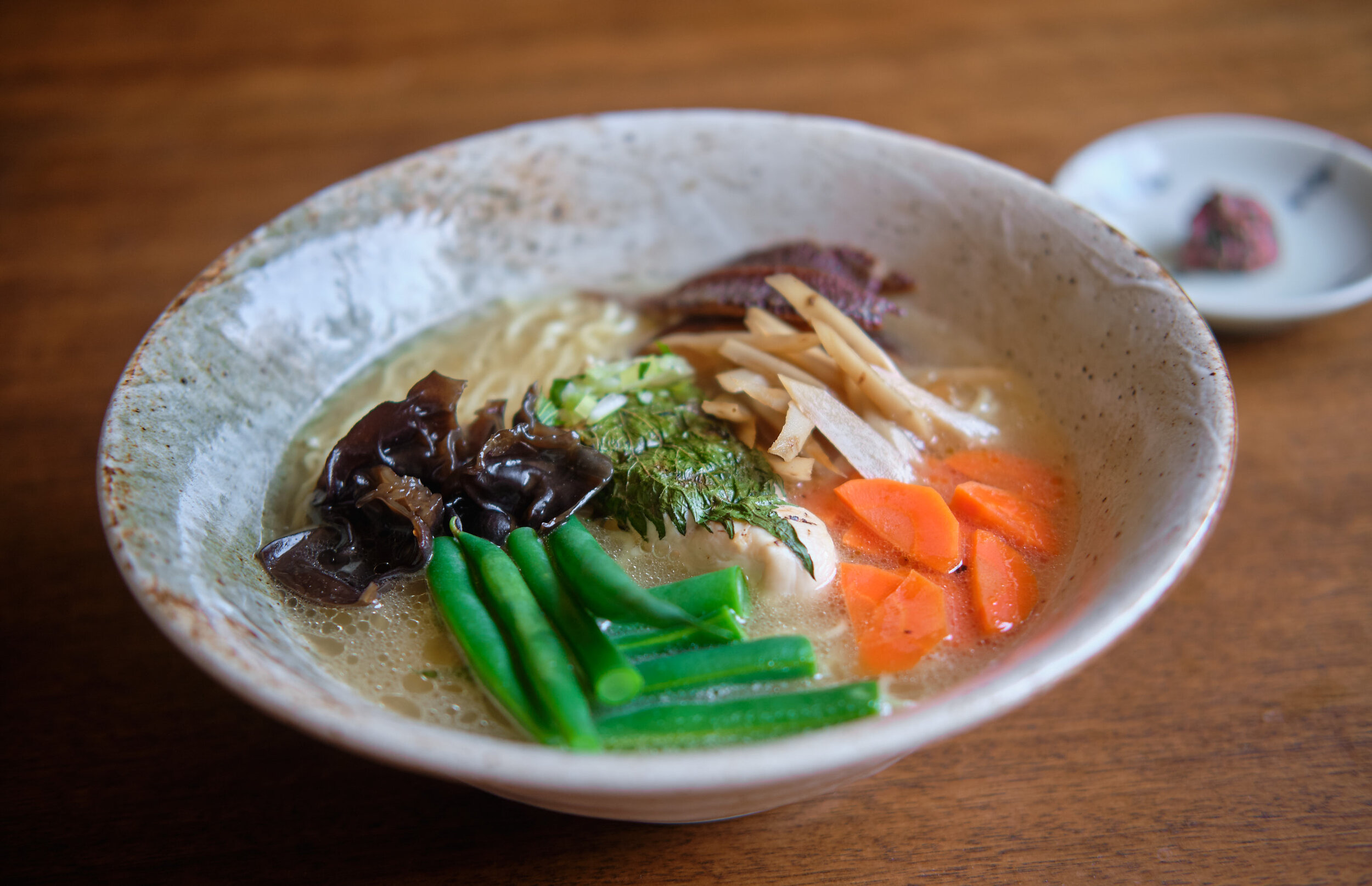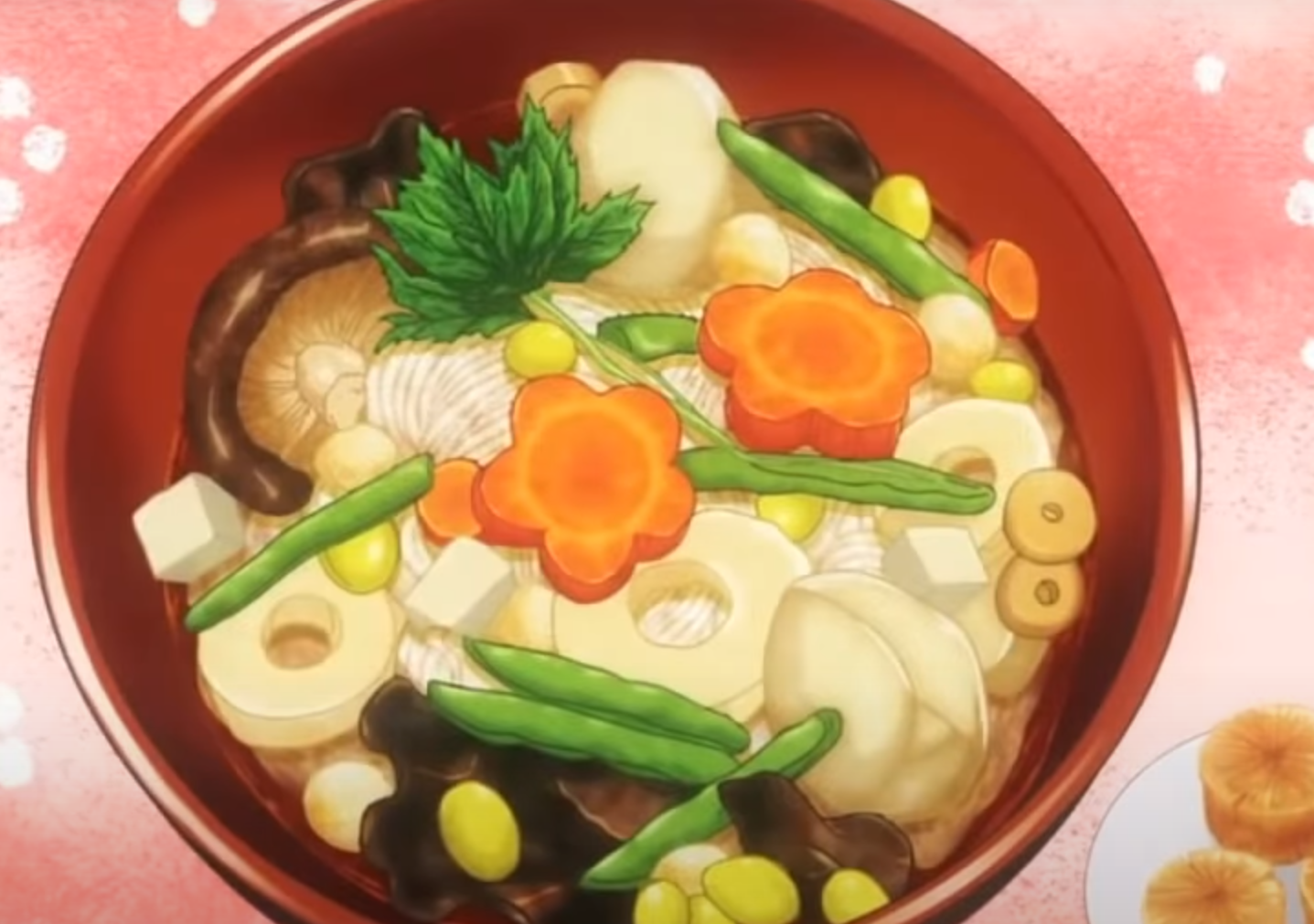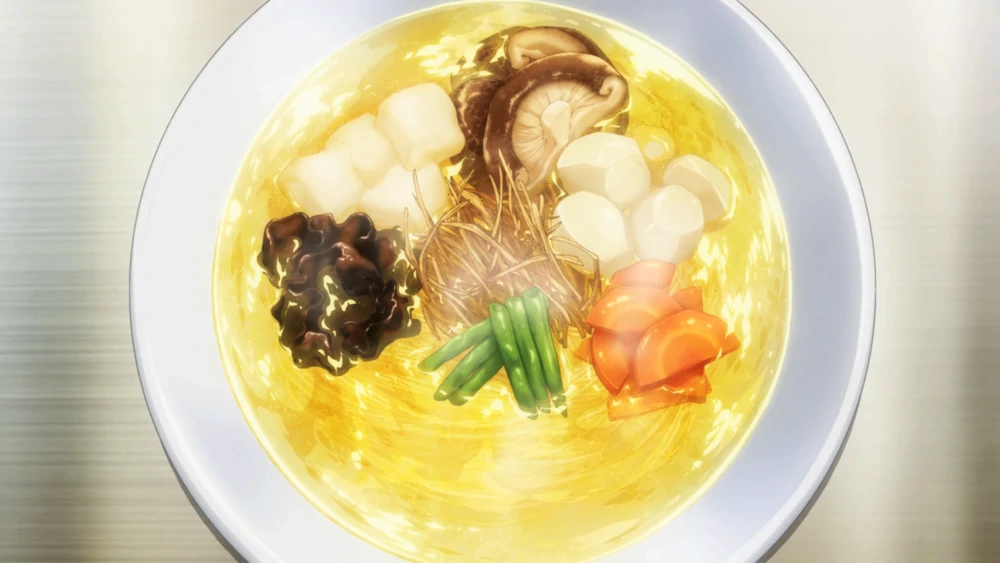[Recipe] Kozuyu Ramen - Ramen in Media Challenge - Shokugeki no Soma (Food Wars)
/For the month of August Way of Ramen is holding a contest on his discord to make a bowl based on a ramen, dish, or food that is inspired by any media. I have been wanting to start making ramen from the shows and movies that I have seen and this contest gave me the push I needed.
For my first bowl I wanted to make something not quite common, something that is realistically good, and something that I can personally identify with. I settled on a Kozuyu Ramen made by Megumi Tadokoro in Shokugeki No Soma (Food Wars). This show/manga has a variety of chefs with different cooking styles, and I identify the most with Megumi. She is very timid and can lack confidence, but when she focuses, the dishes she creates are methodically put together to bring out the most potential of ingredients that remind her of her hometown.
Her Kozuyu Ramen is no exception as it is based on the soup dish that is the Aizu Region’s specialty. It is traditionally made with dried scallops and katsuobushi with toppings that range from carrots, shiitake mushrooms, taro, and wheat dumplings known as mamefu. In the series, Megumi uses the golden umami rich soup of her hometown and combines it with a creamy paitan broth to combat her opponent’s hearty, rich and flavor forward gyokai (seafood) broth. Making a double stock with a clear dashi and paitan results in a broth that can hold its own against any rich broth it goes up against.
Megumi also prepared an Aizu Chicken Paste to go along as an addition to the Kozuyu Ramen to change and enhance the flavors half way through eating. It is comprised of chicken meat, umeboshi (pickled plum), shiso leaves, and green onions. The acid from the umeboshi brightens up the flavors of the broth and vegetables, while the shiso and green onions add some floral flavors to accompany the bowl.
While the Shokugeki no Soma manga has a recipe for this ramen, it would not produce a bowl that could hold a candle to the fictional bowl that Megumi serves. The recipe provided a little bit of insight, but I had to reconstruct this bowl from scratch.
Developing Kozuyu Ramen
Stock: The broth is a double soup that uses a scallop dashi, originating from kozuyu, and a tori paitan (creamy chicken) broth. The scallop dashi is very simple using 3 ingredients: dried Hokkaido scallops, kombu, and shiitake mushrooms. To be honest I was going to add katsuobushi but forgot. In hindsight, I am glad I didn’t as I think it would overpower the beautiful scallop flavors. The tori paitan broth is also kept simple with 3 ingredients: chicken, onions, and garlic. I combined the scallop dashi and tori paitan in a 6:4 ratio to emphasize the scallop flavors in kozuyu while providing a rich base.
Tare: To continue the Kozuyu theme, the tare remains simple. As a starting point, I used a scallop shio tare recipe from Iida Shoten. Megumi uses usukuchi and shiro shoyu as her seasoning components, so I substituted some of the salt to get more of those soy/koji forward flavors.
Aroma Oil: Dried Hokkaido scallops are expensive, so we want to make sure to get the most out of the ingredients. I threw the scallops drained from the stock and tare into oil with garlic, ginger, and green onions. This gave off aromas similar to crab and lobster but not so heavy on the shellfish flavors. I think this will be my new go to for aroma oils. Do not throw away the fried bits of scallops as you can add it as a topping to noodle or rice dishes just as you would with XO sauce.
Noodles: I reached deep into my freezer in hope to make a dent in the noodles that I have accumlated over the past few months. I wanted something thin and light to play a supporting role to let the broth shine. The Ebina noodles from Sun Noodles was the perfect choice for this.
Toppings: This is for the most part a vegetarian dish, at least “asian” vegetarian where seafood is not considered meat. Megumi concentrates her flavors by drying the vegetables and reducing their water content. I have the California sun on my side so drying would be very easy, but I went with another approach by sous viding my carrots and green beans. I am fortunate to have a vacuum chamber (not to be mixed up with a food saver) which can pull out some of the air in the vegetables and concentrating some of their flavors. By cooking them in a sealed bag a lot of the juices that would escape into water is retained in the vegetable. This technique work wonderfully with the carrots but not so much for the green beans. They green beans ended up taking on a greenish brown color, so I decided to blanch them instead to keep them vibrant. I could not find mamefu, so I decided to grill the sasami (chicken tenderlion) from the bird I used for the tori paitan and wrapped it in a shiso leaf.
The most challenging component was the Aizu Chicken Paste. The recipe from the manga used a whole chicken leg from the stock, 3 umeboshi, 5 shisho leaves, and half a leek. The result reminded me of a chicken salad as it was very meaty and did not have the acidic punch. After a few iterations, I got something I was happy with. However if I was to do it all over again, I would use more umeboshi, and maybe only a small bite worth of chicken.
Kozuyu Ramen
Serves 5
The Broth:
Hokkaido Scallop Dashi
1000 mL of Water
40 g of Dried Hokkaido Scallops
10 g of Rishiri Kombu
10 g of Dried Shiikate Mushrooms
Soak dried scallops, kombu, and shiiktake mushrooms in water. Store in the fridge overnight or for about 8 hours. Pour all the ingredients into a pot and bring the temperature up to 158 F (70 C) and remove kombu. Hold the temperature for 20 minutes. Remove shiiktake and scallops and reserve for later.
Tori Paitan Stock
2000 mL of Water
1250 g of Chicken Bones/Meat or One Whole Chicken
1 Onion Cut into Eighths
1 whole bulb of garlic cut in half
Start by breaking down the chicken into individual pieces: breasts, thighs, legs, wings, back bone, breast bone. Save the chicken breast and tenders for a topping or for another dish. Place the bones into a pot with enough water to cover it by about an inch. This should at least be equal to the amount of the weight of the pieces put into the pot, but should not exceed twice the weight. Bring pot to a boil and skim any skum and impurities that come to the surface. We do not want this dissolving into the broth. Continue to boil the bones for 6-8 hours. Be sure to keep an eye on the water level to ensure that all the bones are covered and occasional give it a stir to make sure nothing sticks to the bottom and burns. If you have a pressure cooker, you can cook it on high pressure for 1 hour before quick releasing the pressure.
After you have boiled the bones for 6-8 hours, the meat should easily fall off the bones and become mush. The bones should also be brittle. Put in your garlic and onion into the pot and boil for another hour before straining out the soup. While straining, use a wooden spatula or hard untensil to press out as much as you can out of the vegetables, meat, and bones. This will add to the richness of the paitan broth. If the broth is not creamy and opaque, a blender can be used to emulsify the broth together.
The tare:
Kozuyu Scallop Tare
250 mL of Water
30 g Dried Hokkaido Scallops
8 g of Rishiri Kombu
20 g of Salt*
70 g of Shiro Shoyu (White Soy Sauce)*
52 g of Usukuchi Shoyu (Light Soy Sauce)*
*Assumes that 150 of liquid remains from straining out the dried scallops and kombu.
Soak the dried scallops and kombu in water. Store overnight in the fridge or for at least 8 hours. Pour all the ingredients into a pot and bring the temperature up to 158 F (70 C) and remove the kombu. Maintain the temperature for 20 minutes and then mash the scallops to break it up into individual strands and extract all of the flavor. Strain the scallops and reserve for later. This should yield about 150 grams of liquid. If it is significantly lower, add water until you are close to 150 grams of liquid. If there is too little liquid, you can risk over salting your broth. Too much liquid and your final broth can be under seasoned. Add your salt, shiro shoyu, and usukuchi shoyu and give it about 30 minutes to allow all of the salt to dissolve.
The aroma oil:
Ginger Scallion Scallop Oil:
Broken up Scallops from the Tare
6 Cloves of Garlic cut into quarters
2 inch piece of Ginger sliced
4 Scallions cut into 1 inch pieces
1 cup of Oil or enough to cover all the ingredients
Combine the garlic, ginger, scallops and reconstituted scallop pieces in a small pot and cover with a neutral oil such as canola or grapeseed oil. Gently heat the ingredients on medium low heat until they begin to fry. Maintain this low heat while o for about 20 minutes or until ingredients are golden brown. The goal of frying on a low heat is to extract as much flavor as possible without burning the ingredients. The greens of the scallions and the garlic are the first to brown, so keep a close eye on them.
The toppings:
Carrots: Halve one carrot and thinly cut into semi-circles. Place in a ziploc bag or vacuum seal with a tablespoon of butter, about 2 teaspoons of salt, and 2 minced garlic cloves. Set in a water bath with the temperature set at 180 F (82 C) for 30 minutes. If you do not have an immersion circulator, you can simmer on low heat in a pan and constantly stir until cooked all the way through.
Burdock Root (Gobo): Peel one burdock root and cut into tiny slivers. You can do this by shaving off pieces like you would whittle a stick. Season to taste with soy sauce, salt, and mirin.
Rehydrated Shiitake Mushrooms: Take the mushrooms reserved from your dashi and cut into slices, heat up in a pan, and season to taste with soy sauce and mirin. We are going minimal on the seasoning to let the natural flavors from the ingredients shine.
Green Beans: Take 200 g (1/2 lb) of green beans and blanch them in boiling water for about 1 minute before shocking them in ice water. Strain after 5 minutes and season with salt.
Wood Ear Mushrooms: Grab 6-8 wood ear mushrooms. If they are dried, rehydrate them with warm water for 15 minutes. Slice into strips and season to taste with salt, soy sauce, and mirin.
Chicken Tenders/Breast: Take the raw tenders and breast removed from the chicken used for the paitan breast and cut into 1 inch pieces. Skewer the pieces, season with salt, and wrap with a shiso leaf. Grill on high for about 4 to 5 minutes or until cooked. Brush or spray with sake about every minute.
Aizu Chicken Paste
5 umeboshi
4 green onions
4 shiso leaves
1 tbsp of Chicken Leg meat from the Paitan Broth (optional)
Remove the seeds from the umeboshi. Finely dice the umeboshi, chicken, the green onions and shiso leaves and mix into a paste. It should have a sour acidic taste supported by the fragrant and herbal flavors of shiso. I personally do not agree with using the chicken meat as it ruins the texture and color of the paste and does not offer much flavor. It the spirit of the series I added it in.
Noodles
For this broth, the noodles are chef’s choice. The double soup broth of dashi and paitan lends itself to both thick and thin noodles. I would refrain from using tsukemen noodles as the thick overwhelming presence can unbalance the bowl. I grab some thin noodles that I had on hand from Sun Noodle which was perfect for me.
Assembling Kozuyu Ramen
180 mL of Hokkaido Scallop Dashi
120 mL of Tori Paitan Stock
30 mL of Kozuyu Scallop Tare
15 mL of Ginger Scallion Scallop Oil
1 serving of thin ramen noodles
Toppings as desired: Carrots, Green Beans, Wood Ear Mushrooms, Grilled Shiso Chicken, Burdock Root, Shiitake Mushrooms.
Heat your stocks, water for noodles, and bowls. The bowls can be heated in the oven set at about 180 F (82 C), by filling with water, or place it on top of the water used for boiling noodles. When everything has come up to temperature, remove the bowl and dry if necessary. Place your tare and oil into the bowl and throw in your noodles into your noodle pot. Be sure to loosen them apart and stir occasionally. Thirty seconds before you take out your noodles, place your dashi and stock into your soup bowl. Add your ramen noodles and lay your topping on top.
Congratulations, you have made a bowl that can rival dishes made by students at the Totsuki Culinary Academy.








